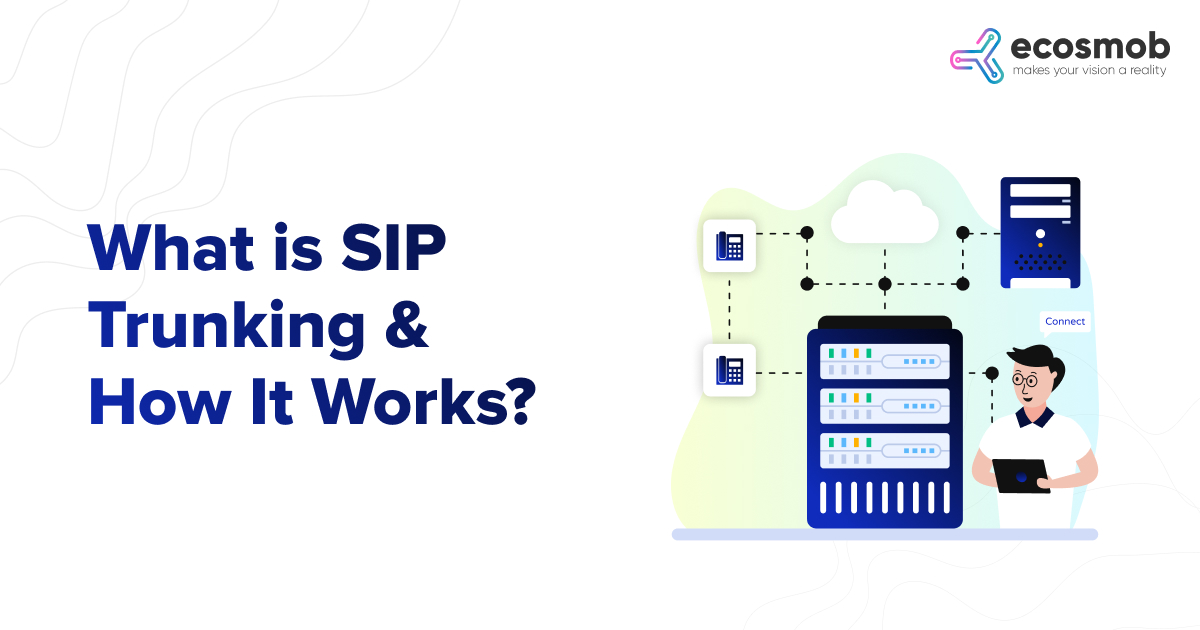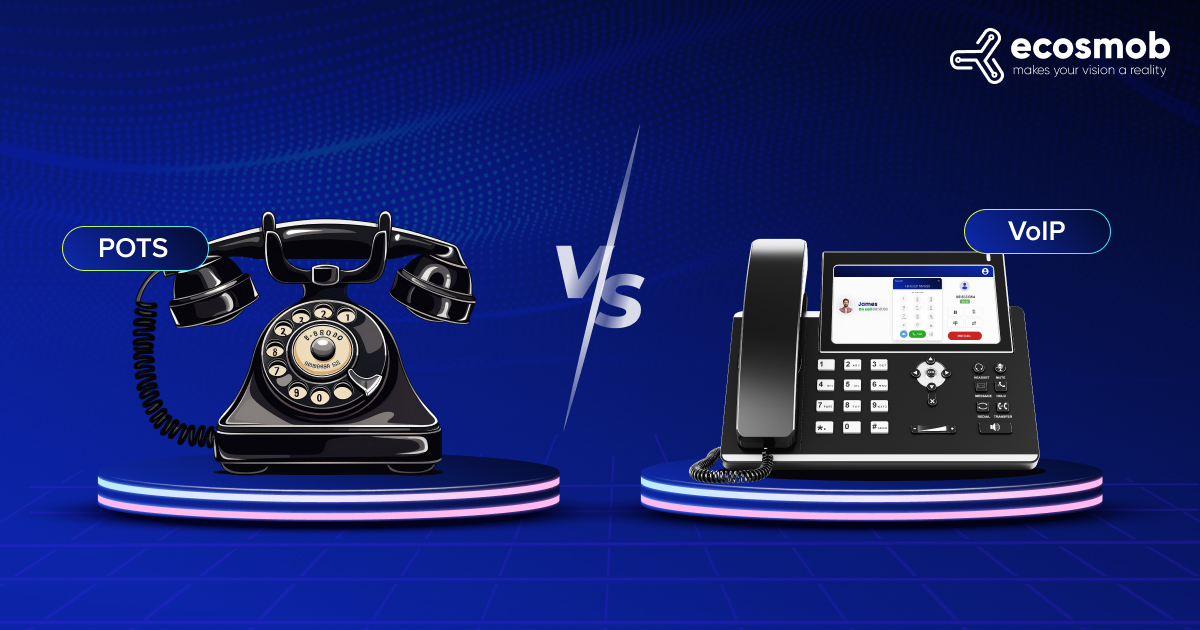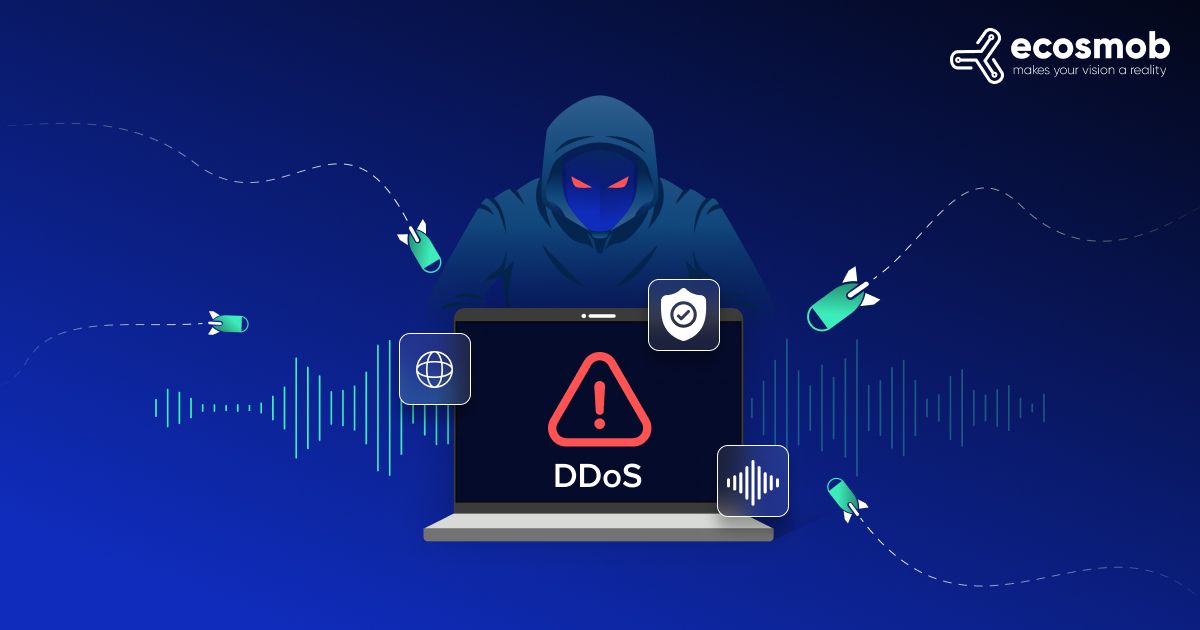QUICK SUMMARY
This blog explores SIP trunking, its benefits, and how it works. Learn why SIP trunking is a cost-effective, scalable solution to enhance business communications.
Businesses are constantly racing to stay ahead, and one critical area often overlooked is communication. Effective communication isn’t just about talking—it’s about connecting, collaborating, and creating seamless interactions across the globe. Meet SIP trunking: a game-changer in the evolution of business communications. So, what exactly is SIP trunking, and why is it making waves in the corporate world? This technology has rapidly become a cornerstone for businesses looking to break free from the limitations of traditional phone lines, offering a more flexible, scalable, and cost-effective solution. Whether you’re new to the concept or looking to refine your understanding, this blog will guide you through the essentials of SIP trunking, including how it works, what SIP phones are, and the numerous benefits that make it a must-have for any modern organization.
Switch now and see instant improvements in cost savings and flexibility.
What is SIP Trunking?
SIP trunking stands for Session Initiation Protocol trunking, a method that allows businesses to transmit video, voice, and other unified communications services over the Internet instead of traditional telephone lines. By leveraging the Internet, SIP trunking eliminates the need for physical phone lines, providing businesses with a scalable and cost-efficient way to manage their communication needs.
According to the business research company, the global SIP trunking services market is expected to reach USD 30.22 billion by 2025, growing at a compound annual growth rate (CAGR) of 10.7% from 2020 to 2025.
SIP trunking uses the VoIP technology to connect a private branch exchange (PBX) to the Internet. A VoIP SIP trunk acts like a virtual version of a traditional phone line, allowing companies to make and receive calls over their IP networks. It’s a crucial component of modern business communications, providing a seamless bridge between legacy systems and newer, internet-based telephony.
How Does SIP Trunking Work?
It’s essential to grasp the fundamentals of SIP technology to understand how SIP trunking works. SIP, or Session Initiation Protocol, is the signaling protocol for initiating, maintaining, and terminating real-time communication sessions. These sessions can include voice, video, and messaging applications. In SIP trunking, the protocol sets up communication sessions between the PBX and the Internet.
Signals and messages between the SIP trunk and the endpoint (like a phone) establish SIP communication. Here’s a simplified breakdown of the process:
- Call Initiation: When a user dials a number, the SIP trunk initiates a call setup request using SIP messages. This request travels through the Internet to the service provider.
- Call Routing: The service provider routes the call to its destination, whether another SIP-enabled device or a traditional phone line.
- Media Transmission: Once the call is connected, the SIP trunk facilitates the transmission of voice, video, or data between the parties. The RTP (Real-Time Protocol) handles this, ensuring a smooth media flow.
- Call Termination: When the call ends, the system exchanges SIP messages to terminate the session.
The core of SIP trunking lies in its ability to replace traditional analog, T1-based Public Switched Telephone Network (PSTN) connections with a flexible, internet-based solution. This shift simplifies the communication infrastructure and allows businesses to scale their phone systems quickly, adding or removing lines without needing physical changes.
What is a SIP Phone, and How Does It Work?
A SIP phone, also known as a SIP IP phone, uses SIP to set up and manage voice calls. Unlike traditional phones that connect via copper wires, SIP phones connect through an IP network, such as the Internet/ Local area network (LAN). These phones can be physical devices resembling traditional telephones or software-based (softphones) on a computer or mobile device.
When you make a call using a SIP phone, it sends SIP signals to a SIP server (often part of a SIP trunking setup). The SIP server then manages the call, routing it to the correct destination. The call’s media (voice or video) is sent over the Internet using a separate protocol, usually RTP.
This technology allows SIP communication to be incredibly versatile, supporting not just voice calls but also video conferencing, instant messaging, and more, all through the same device.
Benefits of SIP Trunking

The transition from traditional telephony to SIP trunking offers numerous benefits beyond simple cost savings. Let’s explore the key advantages that make SIP trunking a must-have for modern businesses:
Cost Efficiency
Traditional phone lines can be costly, especially for long-distance and international calls. SIP trunking allows businesses to bypass the traditional PSTN, reducing costs significantly. It offers predictable, flat-rate billing and can drastically lower the price of making long-distance calls.
Scalability
With SIP trunking, scaling your communication system is as simple as adjusting your subscription with the service provider. Adding new lines doesn’t require new physical connections or additional hardware, making it ideal for growing businesses.
Flexibility and Mobility
SIP trunking supports remote work and global expansion. Employees can use their SIP IP phones with an internet connection from anywhere, enabling seamless communication across different locations and time zones.
Improved Reliability
Unlike traditional phone lines, which can be susceptible to outages due to physical damage, SIP trunking offers excellent reliability. Providers often have failover mechanisms, rerouting calls through other data connections if the primary line fails, ensuring minimal downtime.
Enhanced Features
SIP trunking integrates seamlessly with other IP-based communication services, such as video conferencing, instant messaging, and email. This integration allows businesses to unify their communication systems, streamlining processes and enhancing productivity.
Better Voice Quality
With sufficient bandwidth and a good internet connection, SIP trunking can deliver superior voice quality compared to traditional telephony. HD voice codecs ensure that conversations are crystal clear, reducing misunderstandings and enhancing the overall communication experience.
Global Reach
SIP trunking provides access to global phone numbers, allowing companies to establish a local presence in different markets without needing physical offices. This feature is precious for companies looking to expand internationally.
The benefits of SIP trunking extend far beyond traditional telephony solutions, offering businesses a flexible and scalable communication infrastructure. By embracing SIP trunking, companies can cut costs and enhance connectivity, reliability, and overall communication efficiency, making it a strategic investment for future growth and global reach.
How to Implement SIP Trunking in Your Business
Implementing SIP trunking in your business requires careful planning and consideration. Here are the important steps to ensure a smooth transition:
- Assess Your Current Infrastructure: Evaluate your communication setup, including your PBX, internet connection, and network infrastructure. Ensure your PBX is SIP-compatible or plan for upgrades if necessary.
- Choose a SIP Trunk Provider: It is crucial to select the right provider. Look for a provider with a solid reputation, reliable service, and features that match your business needs. Consider factors like call quality, customer support, scalability, and pricing.
- Estimate Bandwidth Needs: SIP trunking relies heavily on your internet connection. To ensure high-quality calls, you’ll need sufficient bandwidth to handle your expected call volume. Work with your provider to estimate your needs based on the number of concurrent calls.
- Configure and Test: Once you have chosen a provider and assessed your bandwidth, configure your PBX to work with the SIP trunks. Testing is crucial at this stage to ensure that all systems function correctly and that call quality meets your expectations.
- Roll Out: After testing, roll out the SIP trunking solution across your organization. keep an eye on performance and be prepared to make adjustments as needed.
- Train Your Team: Educate employees about SIP phones and any new features available through SIP trunking. This training will help them maximize the benefits of the new system.
Implementing SIP trunking can significantly streamline your communication processes. Still, it’s essential to approach it with a strategic plan by carefully assessing your current setup, choosing the right provider, and ensuring adequate bandwidth. Remember to test thoroughly and train your team to fully leverage the advantages of SIP trunking, providing a seamless integration that supports your business’s communication needs now and in the future.
Common Challenges and Solutions in SIP Trunking
While SIP trunking offers many advantages, it has its challenges. Here are some common issues businesses may face and how to overcome them:
- Bandwidth Limitations: Adequate bandwidth can improve call quality. To prevent this, conduct a thorough bandwidth assessment before implementation and consider upgrading your internet service if necessary.
- Network Security: Like any internet-based service, SIP trunking can be vulnerable to security threats like toll fraud. Protect your system by working with your provider to implement security measures such as encryption, firewalls, and secure authentication.
- Compatibility Issues: Not all PBX systems are compatible with SIP trunking. Ensure your existing PBX can support SIP or plan for upgrades or replacements.
- Provider Reliability: It is critical to choose a reliable SIP trunk provider. Vet potential providers carefully, customer reviews, checking for uptime guarantees, the quality of their customer support.
To successfully navigate these obstacles, one must be proactive and use meticulous planning. By addressing these issues upfront and working with a trusted provider, businesses can fully leverage the benefits of SIP trunking while minimizing risks. Overcoming these hurdles will lead to a more robust, flexible, and efficient communication system supporting your business’s growth and connectivity needs.
Future Trends in SIP Trunking
The future of SIP trunking looks promising, with trends indicating even more advanced integration with cloud-based services and AI-driven communication tools. Businesses can expect continued improvements in call quality, cost reductions, and enhanced features that further simplify global communications.
Moreover, as 5G technology becomes more prevalent, SIP communication’s capabilities will expand, offering even faster and more reliable connections. SIP trunking will become an even more alluring choice as a result of this progress for companies trying to stay competitive.
Partner with Ecosmob Technologies for Your SIP Trunking Needs
Understanding SIP trunking and how it works is essential for businesses looking to modernize their communication infrastructure. By replacing traditional phone lines with a VoIP SIP trunk, companies can achieve greater flexibility, reduce costs, and enhance communication capabilities. As you consider switching to SIP trunking, remember the importance of choosing a reliable provider, assessing your bandwidth needs, and preparing your team for the transition. With SIP trunking, you can embrace the future of communication and set up your company for success in the digital era.
Ecosmob Technologies specializes in innovative communication solutions, including tailored SIP trunking services designed to meet your business requirements. Our team of experts has extensive experience in deploying, managing, and optimizing SIP trunking solutions that ensure seamless connectivity and superior performance. For personalized guidance and support throughout your SIP trunking journey, contact the experts at Ecosmob Technologies. Let us help you transform your communication infrastructure and drive your business forward with confidence.
Start benefiting from SIP trunking today and unlock unparalleled communication efficiency. Don't miss out
FAQs
What is SIP trunking, and how does it differ from traditional phone lines?
SIP trunking replaces traditional phone lines with a more adaptable and affordable option by using the Internet to send voice, video, and data.
How does SIP trunking improve business communication?
SIP trunking enhances communication by providing scalability, cost savings, better voice quality, and the ability to integrate with other IP-based communication services.
What are SIP phones, and how do they work with SIP trunking?
SIP phones connect through an IP network and use the SIP protocol to set up and manage calls. They work seamlessly with SIP trunking for unified communication.
How does SIP trunking work with existing PBX systems?
SIP trunking connects your existing PBX to the Internet, enabling voice and data transmission over IP networks. You may need to perform compatibility checks and potential upgrades.
What are common challenges when implementing SIP trunking, and how can they be addressed?
Challenges include bandwidth limitations, security concerns, compatibility issues, and provider reliability. You can manage these by planning carefully, implementing security measures, and choosing the right SIP trunk provider.















